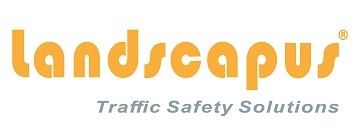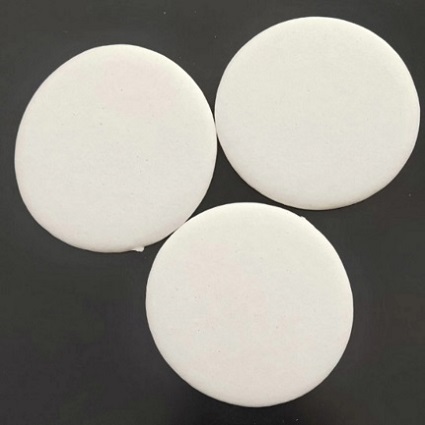Thermoplastic ROAD MARKING PAINTS
EN 1871:2000 / AASHTO M249
TECHNICAL DATA SHEET (TDS)
WHITE & YELLOW
General
This specification / requirements is covering the purchase of reflective Thermoplastic paint for road marking for white and yellow color lines and horizontal traffic signs.
Material
The materials shall comply with the EN 1871:2000 standard – Road marking materials physical properties.
Technical Characteristics
|
Characteristic, Relative Paragraph of ΕΝ 1871: |
White |
Yellow |
|
Chromatic coordinates - 4.2.1.1 |
Table 2-White |
Table 2-Yellow |
|
Class of luminance Factor β, 4.2.2.1 -Table 5 |
LF4(β≥0,70) |
LF1(β≥0,40) |
|
Softening Point,4.2.1.2 - Table 6 |
SP3((≥95°C) |
SP3((≥95°C) |
|
Cold Impact,4.2.1.4 - Table 7 |
Cl2 |
Cl2 |
|
UV Aging,4.2.1.5-Luminance Factor-Table 3 |
UV1((Δβ≤0,05) |
UV1((Δβ≤0,05) |
|
UV Aging,4.2.1.5-Chromaticity Coordinates-Table 2 |
Table 2-White |
Table 2-Yellow |
|
Heat Stability,4.2.3.1- Chromaticity Coordinates - Table 2 |
Table 2-White |
Table 2-Yellow |
|
Heat Stability,4.2.3.2 - Softening Point |
ΔSP≤±10°C |
ΔSP≤±10°C |
|
Weather Resistant,4.2.2.4 - Table 9 |
TW2( 2,5 – 5,0) |
TW2( 2,5 – 5,0) |
|
Weather Resistant(after UV aging) 4.2.3.6 - Table 10 |
TWU1(0 to 0.5) |
TWU1(0 to 0.5) |
Additional to the above requirements the offered Thermoplastic paint shall appear the below properties / performance, in use that are designated in EN 1436:2007 +A1 Road Marking Materials – Road Marking Performance for road Users:
|
Characteristic, Relative Paragraph of ΕΝ 1436: |
White |
Yellow |
|
Luminance coefficient under diffuse illumination in dry conditions 4.2.2 Table 1 |
Q3 (Qd≥130) |
Q2(Qd≥100) |
|
Retroreflection under vehicle headlamp illumination, Dry road Markings, 4.3, Table 3 |
R4(RL≥200) |
R3(RL≥150) |
|
Chromatic coordinates, 4.4, Table 6. |
Table 6-White |
Table 6-Yellow class Y1 |
|
Skid Resistance.4.5, Table 7 |
S2(SRT≥45) |
S2(SRT≥45) |
Composition of the Thermoplastic paint
The pigment, the glass bead the filler shall be uniformly spread in the resin and complies to the below Table:-
|
Composition of the Thermoplastic paint % per mass |
|||
|
Component |
White |
Yellow |
Red |
|
Binder |
18.0 min |
18.0 min |
18.0 min |
|
Glass Beads – According the ΕΝ 1424:1997/A1:2003 |
30-40 |
30-40 |
30-40 |
|
Calcium Carbonate and inert Fillers |
42 max |
42 max |
42 max |
|
Titanium Dioxide – According to ASTM D476 Type II(Rutile) |
10.0 min |
------------- |
-------------- |
The granulometry of the Glass Beads that are spread in the Thermoplastic paints shall be as per below Table:
|
Sieves ISO 565:1990 R 40/3 - μm |
Cumulative retained mass (%) |
|
710 |
0-2 |
|
600 |
0-10 |
|
355 |
30-70 |
|
212 |
70-100 |
|
125 |
95-100 |
EXTRUSION
This process employs a mechanically propelled vehicle. Extrusion utilises an auger or pump from a thermostatically controlled tank to extrude the hot thermoplastic through a gate opening set to produce a line of pre-selected thickness of material onto the road surface. Glass Beads are
automatically applied to the molten line. Generally used on new road construction projects and surface dressings.
Extrusion thermoplastic product consists of a mixture of light coloured aggregates, pigment and extender bound together with a thermoplastic binder system.The exact composition of an Extrusion thermoplastic grade will depend on the specification requirements, and is designed that when in a molten state, it can be extruded onto the road surface to give an even line of good definition.In order to give good drainage characteristics, a drainage channel may be incorporated into the line at predetermined intervals.Immediately following application of the line, a surface application of solid Glass Beads to IS EN 1423 or equivalent shall be applied at a typical rate of 450 g/m2 by an applicator gun attached to the spray Machine.Lines are tack free within 1 minute at an ambient air temperature of 15°C.
.Recommended Thickness 2.0 – 4.25 mm.
A high output marking for traffic delineation, advisory markings and mandatory markings on all categories of roads. Extrusion is generally used on new road construction projects, asphalt, tarmacadam and surface dressed roads.
Application Temp °C 170 – 190










